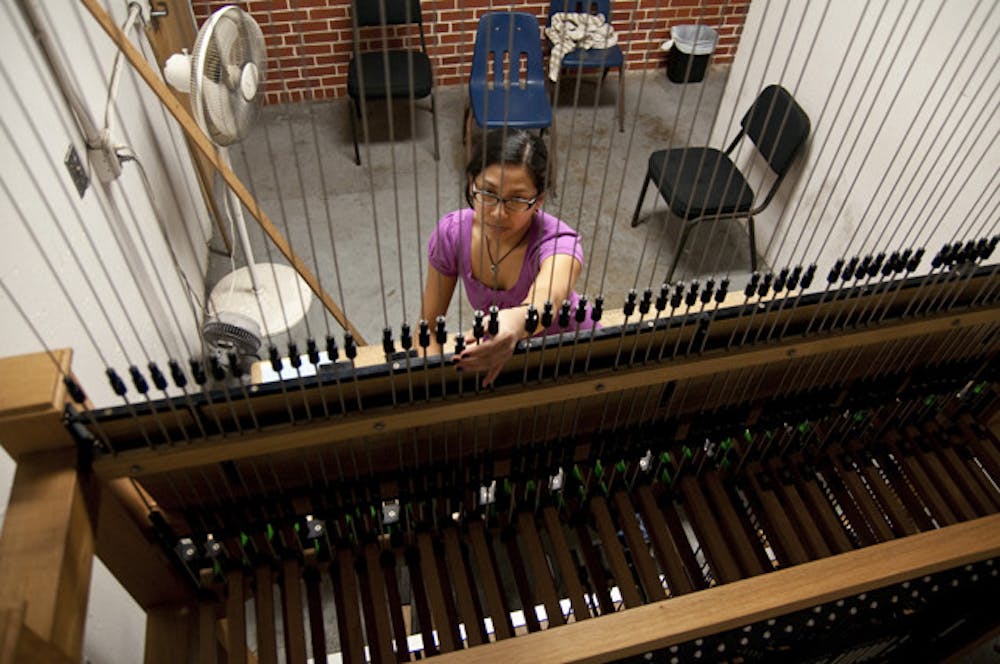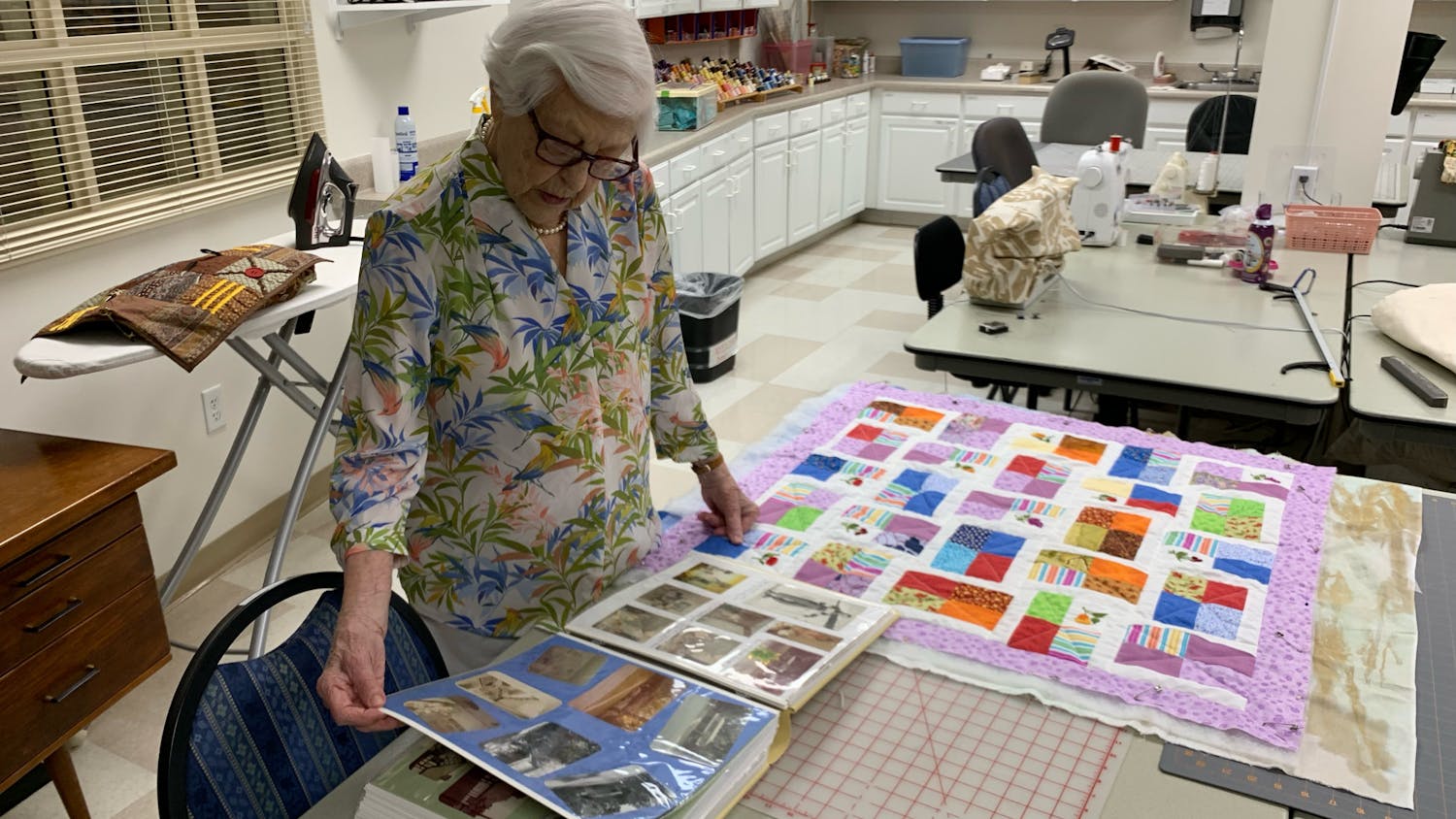If UF’s campus had a soundtrack, it would surely be the ringing bells of Century Tower. The distant sounds echo throughout campus from every corner, providing comforting music as students hustle and bustle to class.
Century Tower, built in 1953, stands as a landmark at 157 feet tall. It’s one of only four carillons, or fixed bell towers, in Florida, and it’s one of the largest in North America. It was originally built in 1956 to commemorate the 100-year anniversary of UF and to honor students and faculty who fought in World War I and World War II.
In 1979, the tower underwent a major renovation to install the 61 bells that ring today.
And while it’s no mystery that Century Tower is UF’s most well-known landmark, not many know how it works.
Currently, the carillon is played live twice a day at 12:35 p.m. and at 4:55 p.m. for a 15-minute recital. It chimes every 15 minutes of every day automatically.
“As long as you have a musical background, the carillon is an instrument that can be taught,” said Dr. Laura Ellis, associate professor of music and carillon class instructor.
A little-known fact: Any UF student can audition to be in the carillon class, where budding musicians can learn to play the carillon.
“[Students] have to have a strong interest, and you need to be coordinated,” Ellis said.
Tucked inside University Auditorium, 10 students sit around a long table divvying up weekly time slots. They meet with Ellis for private lessons and practice times in addition to the once-a-week class.
“We’ve made some big strides,” Ellis said.
There wasn’t always a late afternoon performance, and the carillon studio performs one 50-minute program one Sunday a month.
“The neatest thing about teaching is to watch the growth of the musicality,” Ellis said. “You get to see the students from the first time they put their hand on the baton to what you hear today.”
Melissa Garcia, 21, has been in the carillon class for the past five semesters. A senior finance major, she practices as much as she can and enjoys spending time in the studio with classmates.
“We get along really well with each other. We’re like one big, happy family,” Garcia said.
Twice a day, Garcia and the other students climb the 11-and-a-half flights of stairs it takes to get to the top of the tower.
The inside of Century Tower isn’t as majestic as the outside. The concrete stairs and aluminum railings are cold and seemingly never-ending. When you finally make it to the top, a small room houses the large carillon, a long bench, a fan and a few extra chairs.
The instrument is made of long wooden rods that extend past view. Each rod is attached to a corresponding bell directly above the instrument. Garcia props open a small square hatch to help hear the bells as she plays.
Next, she sets up her sheet music, securing it with fishing line so the wind doesn’t blow it away midperformance. She adjusts the bells and tunes them so that they’re just right, even though the whole campus can hear any sound the bells make.
“Most people don’t even notice the noise,” she said.
When the clock strikes 4:55 p.m., Garcia starts to play, using her hands and feet on the keyboard made of 61 large wooden keys, called batons, and 25 foot pedals. The orientation of the carillon is very similar to the black and white keys of a piano.
After a 15-minute performance of four songs, Garcia feels worn-out. She said she’s rusty after not playing over winter break, but to the non-musical ear, the music is as soothing as ever.
“My favorite part is getting a song completed,” Garcia said of practicing and learning new pieces. “It makes me feel accomplished.”
The walk down the tower steps is much easier than the walk up, and at the bottom, Ellis is waiting with feedback and notes for her student.
“I like [playing the carillon]. It keeps me sane.”






